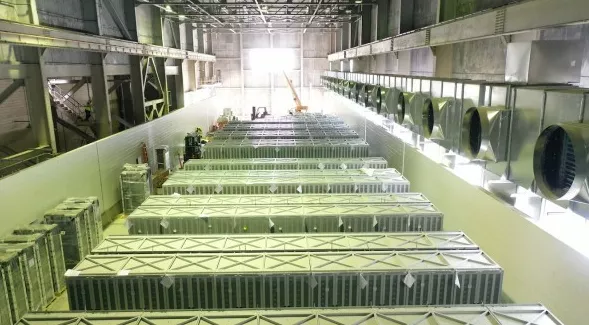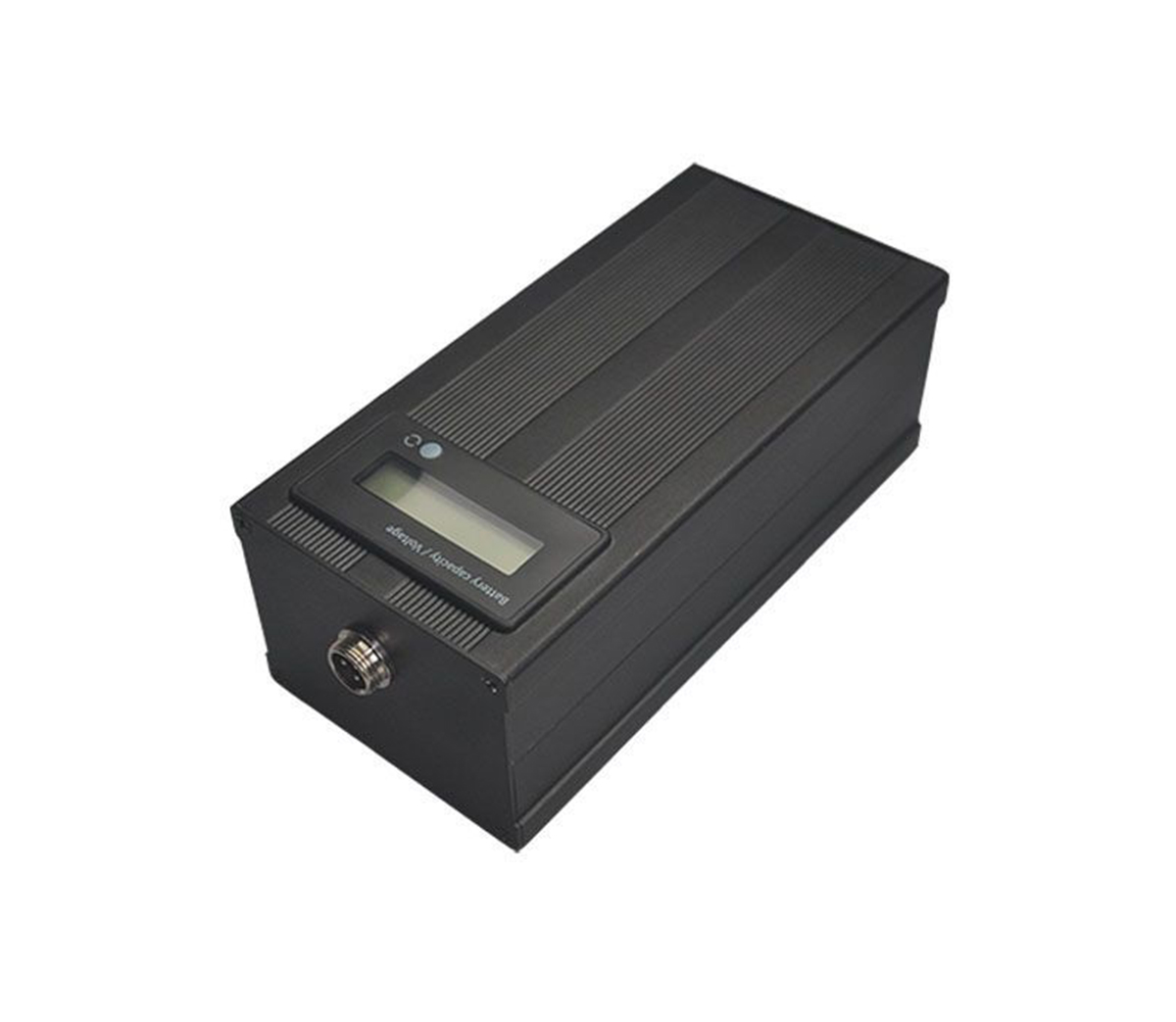Less than 5 months apart! The world's largest energy storage power station
in the United States is on fire again! The battery equipment manufacturer is
LG
On the evening of February 13, another accident occurred at the Moss
Landing energy storage power station project in California, and about 10 battery
racks were melted.
This is the second incident at the project in the past five months. On
September 4, 2021, the project had a battery overheating accident. Firefighters
said the two incidents provided a lesson for all parties to make any necessary
adjustments or improvements.
SES Power has rich experience in customizing lithium battery systems. We
are very concerned about the safety issues in the application of lithium
batteries, especially with the acceleration of the global energy conservation
and emission reduction process, clean energy (wind power, hydropower,
photovoltaic power generation, etc.), the energy storage industry has ushered in
explosive growth. This means that there are more and more potential fire
hazards. We cannot learn with fresh life. We must effectively formulate and
popularize the fire protection standards and knowledge of battery energy storage
systems, especially large-scale lithium-ion battery systems.

(Aerial view of the energy storage power station, natural gas power plants
have been replaced by emission-free lithium battery technology)
The owner and operator of the project is Vistra Energy, the battery
equipment provider is LG Energy Solution, which just went public, and Fluence is
the system integrator and engineering contractor. The project site is located in
Moss Landing, Monterey County, California, USA. It was originally a natural gas
power plant owned by Vistra Energy and was replaced by an energy storage power
plant.
The facility's primary purpose is to help California reduce power shortages
during nighttime rush hours and replenish electricity during the day from the
state's cheap and abundant solar PV generation, which is released when the grid
needs it most. The energy storage power station started operation on December
11, 2020. When it was completed, it was the world's largest battery energy
storage system (BESS), including 300MW/1200MWh lithium-ion batteries. When the
energy storage power station is running at full capacity, it can supply power to
225,000 households for 4 hours.
LG New Energy revealed that the factory has installed more than 4,500
battery racks, and it is the latest model TR1300. LG says the TR1300 battery
racks are factory pre-assembled before shipping, which reduces construction time
and installation costs. Equipped with JH4 high-energy batteries, the TR1300
racks can be installed into the existing turbine halls of the Moss Landing power
plant due to their ability to double stack, minimising construction work.

(Part of 4,500 battery racks at Moss Landing Energy Storage Station)
LG New Energy said the TR1300 has been tested according to UL 9540A thermal
runaway fire spread standard, and the rack design meets California Building Code
requirements, which are considered safe to operate when the perimeter is
threatened by seismic activity.
Moss Landing also previously had a huge battery energy storage system
called Moss Landing BESS. The energy storage capacity of the project is
182.5MW/730MWh, and the equipment is provided by Tesla.
Vistra Energy said in June 2021 that if market and economic conditions
permit, the scale and capacity of the Moss Landing energy storage plant may
subsequently be expanded to accommodate up to 1,500MW/6,000MWh of energy
storage.
However, as soon as the words fell, the project encountered an
accident.
On the evening of September 4, 2021, the first phase of the Moss Landing
project caused losses to about 7% of the battery modules and other system
equipment in the project due to the activation of the battery's water cooling
system. The accident did not cause casualties or affect the surrounding
communities.
After the accident, Vistra, the operator of the project, together with
external experts, conducted a five-month investigation into the accident and
formulated a rectification work plan for the project, which is planned to be
fully implemented before the project restarts.
The findings revealed that at approximately 18:41 on September 4, the VESDA
unit detected smoke near containers 64, 57, 47 and 41, causing the release of
water in pre-action zone 24 and preventing the passage of the affected
container. The current flow of the container (an automated process called
E-Stop). Due to an apparent programming error in VESDA, these actions occur when
the detected smoke level is below the specified design level, at which point the
water is released and the E-Stop is activated.
During the first release of water to the cooling system, the temperature of
all battery modules was recorded within a set temperature range, well below
levels that would indicate thermal runaway. Therefore, the investigation
concluded that the battery module was not the source of the smoke.
At the time of the accident, a small number of fittings on hoses and pipes
that were part of the battery cooling system failed, causing water to spray onto
the battery racks. This in turn leads to short circuits and arcs, which can lead
to battery damage and more fumes.
These additional fumes are detected by other VESDA equipment, causing water
to be released into other preaction zones, followed by hose/pipe failure,
releasing more water, causing more damage and fumes. Vistra was unaware of any
fire in the building and the original fire suppression system inside the
building was not activated.
Overall, about 7% of the mods were damaged to varying degrees, and other
facility systems were also damaged. This damage is caused by water released from
the cooling system and the resulting short circuits and arcs. Part of the water
is sprayed directly onto the battery rack, and part of the water leaks to the
lower battery rack through the upper gap.
The preaction headers and pipes on each battery rack are individually
pressure tested before they are connected to each other. However, Vistra was
unable to confirm whether the contractor pressure-tested the entire cooling
system after connecting the racks to the headers. Most of the failures were on
the hoses connecting the rack to the header, apparently not pressure tested.
Less than 5 months later, the project caught fire again, and Vistra Energy
subsequently issued a statement, "Late February 13, the Moss Landing Project
Early Detection System was activated, and as we have agreed at all facilities,
out of an abundance of caution, we have contacted off-site emergency response
and there were no casualties at the scene. An investigation is ongoing to
determine why the security systems were activated and we will share more
information as we learn more about the situation."
From the analysis of Vistra Energy, it can be concluded that the design of
the surrounding of the lithium battery has caused the safety hazard of the
lithium battery system. SES Power has rich experience in lithium battery packs
for energy storage systems. It is recommended that customers use lithium iron
phosphate batteries first, such as 12V100Ah, 12V200Ah, 24V100Ah, 48V100Ah and
other modular lithium batteries. We will increase the safety of the battery
according to the actual situation. Protection is not only about the electronic
structure, but also needs to be comprehensively dealt with in terms of
mechanical mechanisms, destructive shocks, etc. The more comprehensive the
system is considered, the higher the safety of lithium batteries.
The ternary lithium battery with high energy-to-volume ratio has more
energy than lithium iron phosphate battery, but the safety is superior to
lithium iron phosphate, so SES Power recommends using long cycle life and high
safety in the energy storage system as much as possible. Lithium iron phosphate
battery.




































